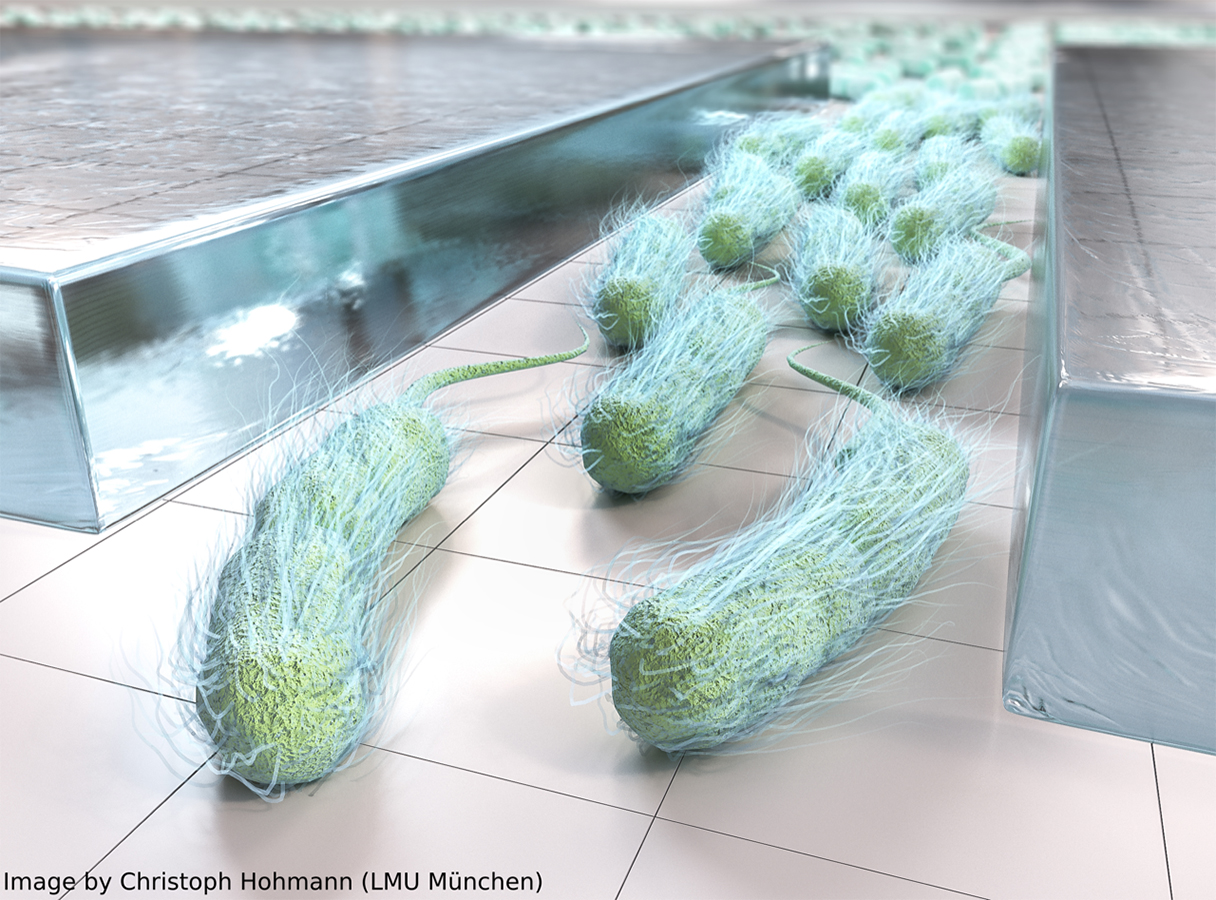Active matter invasion
Felix Kempf, Romain Mueller, Erwin Frey, Julia M. Yeomans and Amin Doostmohammadi
 There is now growing evidence of the impact of geometric confinement on the patterns of motion of biological materials. For example, experiments on cell monolayers and bacterial suspensions have shown that the interplay between the activity of the cells and the confinement size can stabilise otherwise chaotic flows of cells into coherent motion. However, many such cellular systems are not composed of conserved number of particles. Indeed, in most natural conditions, cells in a monolayer or bacterial cells in a biofilm regularly proliferate and form a progressive front that infiltrates the surrounding environment. No current continuum theory in cell mechanics or in active matter can explain the mechanism of active matter invasion within confined spaces
There is now growing evidence of the impact of geometric confinement on the patterns of motion of biological materials. For example, experiments on cell monolayers and bacterial suspensions have shown that the interplay between the activity of the cells and the confinement size can stabilise otherwise chaotic flows of cells into coherent motion. However, many such cellular systems are not composed of conserved number of particles. Indeed, in most natural conditions, cells in a monolayer or bacterial cells in a biofilm regularly proliferate and form a progressive front that infiltrates the surrounding environment. No current continuum theory in cell mechanics or in active matter can explain the mechanism of active matter invasion within confined spaces
Here, we show, numerically, that the physics of active matter invasion through capillaries of different widths is characterised by distinct modes of the deformation of the progressive front. We find three distinct modes of invasion – including a regime, where clusters of active matter can detach from the main cohort of the growing material – and scrutinise the physics of crossover between the invasion regimes. Our findings add to the understanding of growing active matter, and provide a number of testable predictions for future experiments.
The results contribute to the increasing realisation of the importance of the mechanical properties of living systems in controlling their behavior, and we believe that they will be of interest to a broad range of biophysicists, mathematicians, and cell biologists interested in connecting the physics of soft active matter to the dynamics of biological systems.

